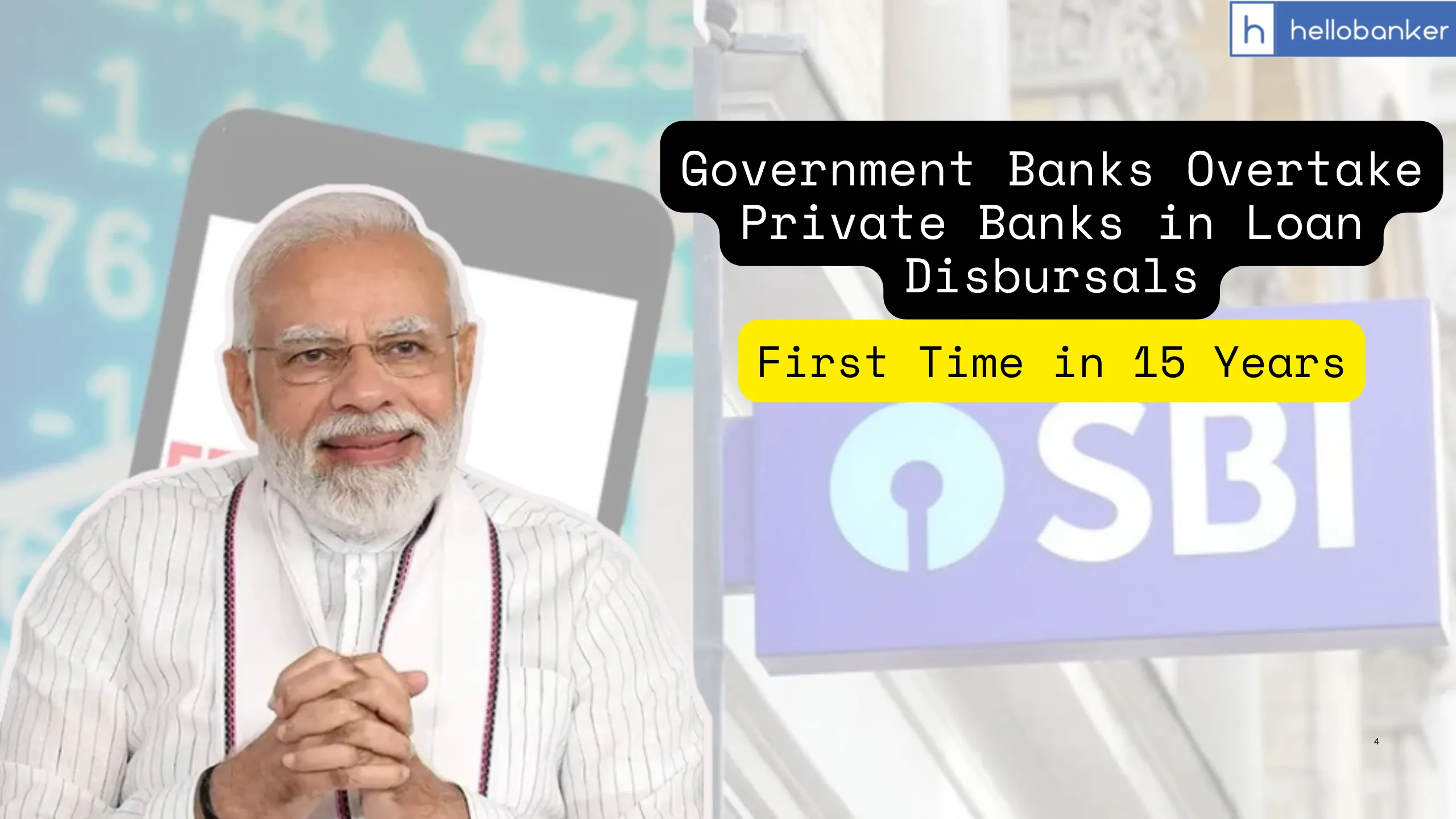| ➡️ Get instant news updates on Whatsapp. Click here to join our Whatsapp Group. |
Government banks in India have made a big comeback. For the first time in 15 years, public sector banks (PSBs) have given out more loans than private banks. This is a major change in the country’s banking sector.
The growth has been especially strong in personal loans, where government banks are now lending at a faster rate than private banks. This shift shows that government banks are becoming more active and competitive in meeting the needs of customers.
This achievement is a big milestone because it’s the first time in over a decade that public sector banks have moved ahead of private banks in total loan distribution. It reflects the growing trust of customers in government banks and their improved performance in recent years.
What’s the reason behind this?
According to the Reserve Bank of India (RBI) and other financial reports, one of the main reasons of increase in loan disbursals of government banks is that private banks like HDFC Bank and Axis Bank have slowed down their lending. In recent years, private banks usually led in giving loans, but now they are lending less compared to public sector banks.
Another possible reason is that government banks are more involved in running loan schemes launched by the central and state governments. These include schemes like the PM Vishwakarma Yojana and the PM Svanidhi Yojana, which provide financial support to small workers and vendors. Private banks have taken very little part in these schemes, while most of the loans under them have been provided by public sector banks. This could be a big reason why public banks are now giving out more loans than private ones.
How Much Have Public Sector Banks Grown?
By December 2024, public sector banks recorded a strong 17% growth in personal loan disbursals, while private banks managed only 10% growth in the same category. This clearly shows that public banks are stepping up and winning borrower trust in the retail loan space. Public sector banks aren’t just leading in personal loans—they’re also ahead in industrial and service sector loans.
- Industrial loans: Public banks provided 60% of the total ₹37.9 lakh crore
- Service sector loans: They contributed 56% of ₹49.9 lakh crore
- Personal loans: Public sector banks disbursed 52% of ₹51.1 lakh crore
This wide lead proves that PSBs are playing a much larger role in supporting India’s economy across sectors.
Credit Growth vs Deposits
Interestingly, for the fourth year in a row, banks have given out more loans than the money they have received through deposits. This kind of trend is very rare and has happened only two times in the last 50 years. Most of the money banks received as deposits came from Fixed Deposits (FDs), which made up 86% of the total increase in deposits. As of December 2024, half of all the money kept in banks is now in the form of term deposits like FDs.
Home Loans
Government banks are also doing very well in giving home loans, especially in smaller cities (Tier-3) and rural areas. In the financial year 2024–25, public sector banks gave out 46.4% of all home loans, up from 45.1% the year before. Meanwhile, private banks saw a small drop in their share of home loans—from 54.9% to 53.6%. During this period, public banks gave out ₹2.1 lakh crore in new home loans, which makes up 56.1% of all home loans given that year.
Non-Resident Indians (NRIs)
Deposits by Non-Resident Indians (NRIs) grew well in the financial year 2024–25. Their total deposits increased by 10%, reaching ₹14.16 lakh crore by March 2025. About half of these deposits are in fixed deposits (FDs), which shows that NRIs still have strong trust in India’s public banks for saving their money for the long term.
